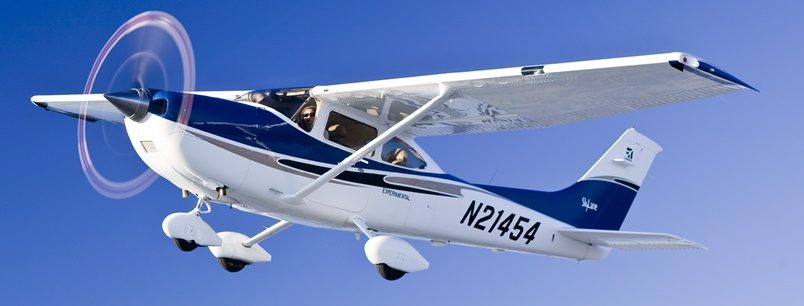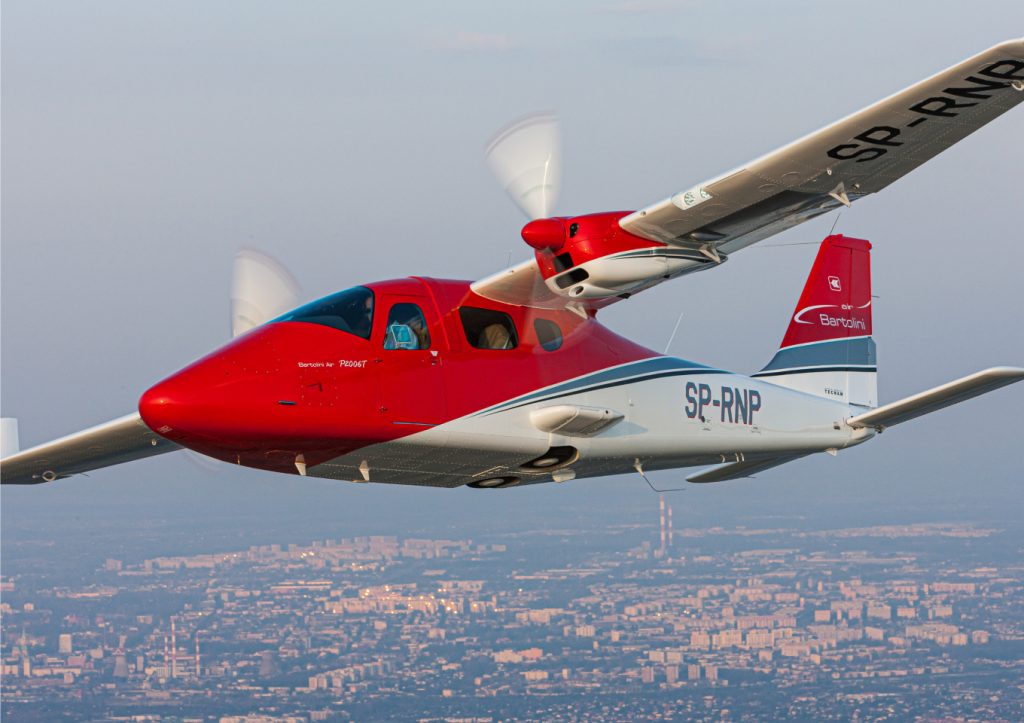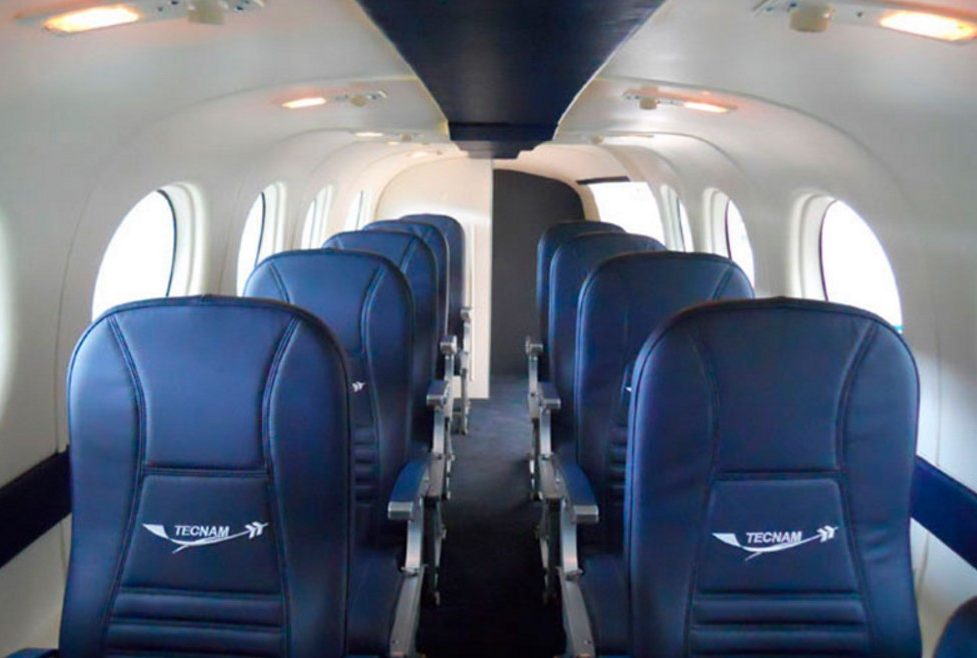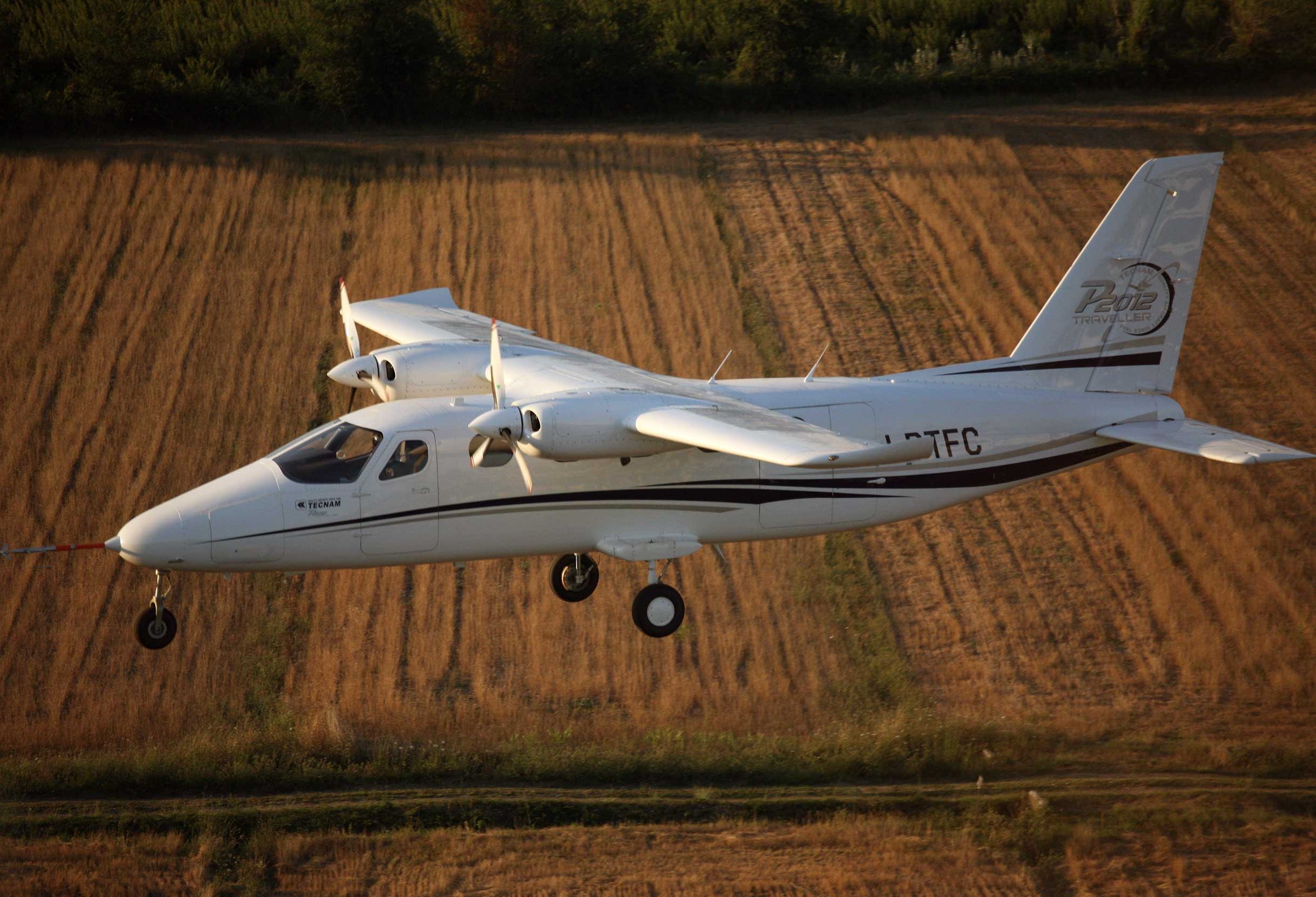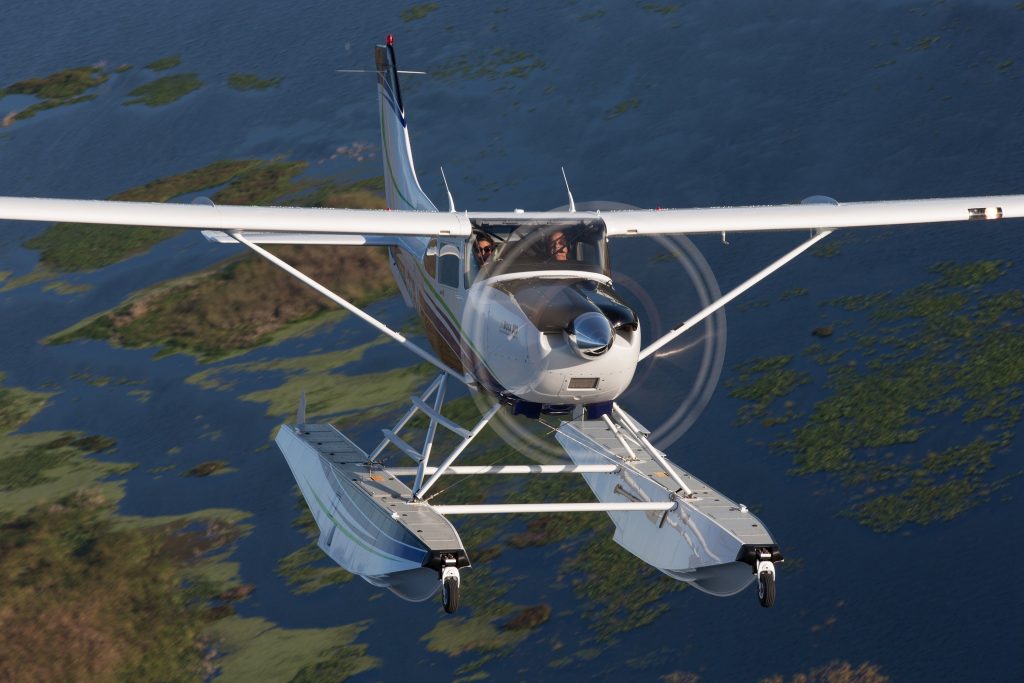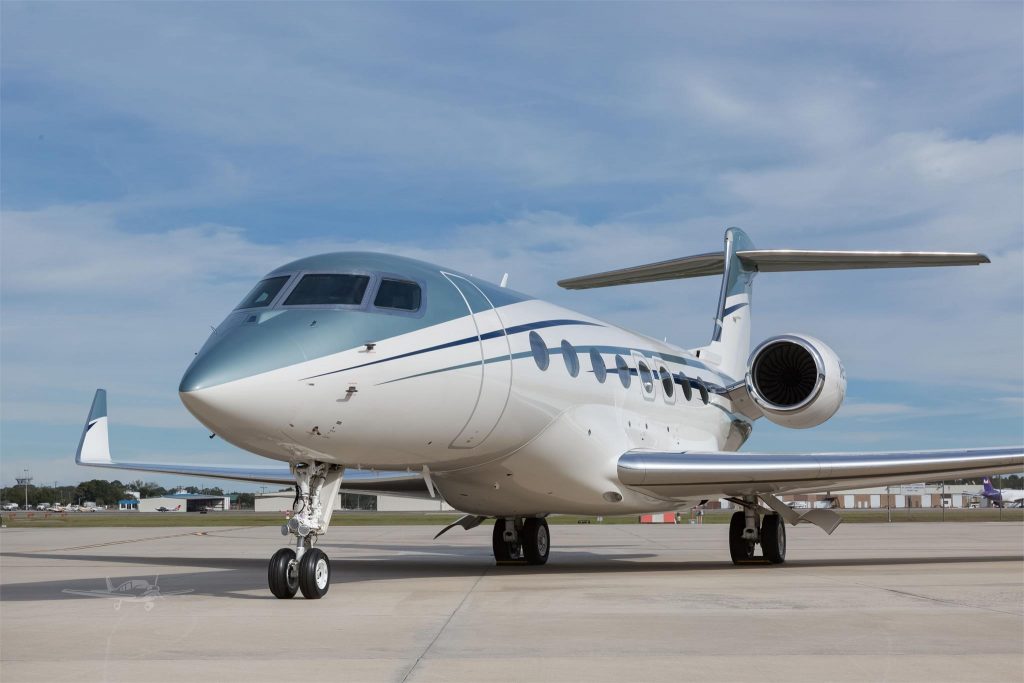Introducing the Tecnam P2012 Traveller: Transforming Regional Aviation.
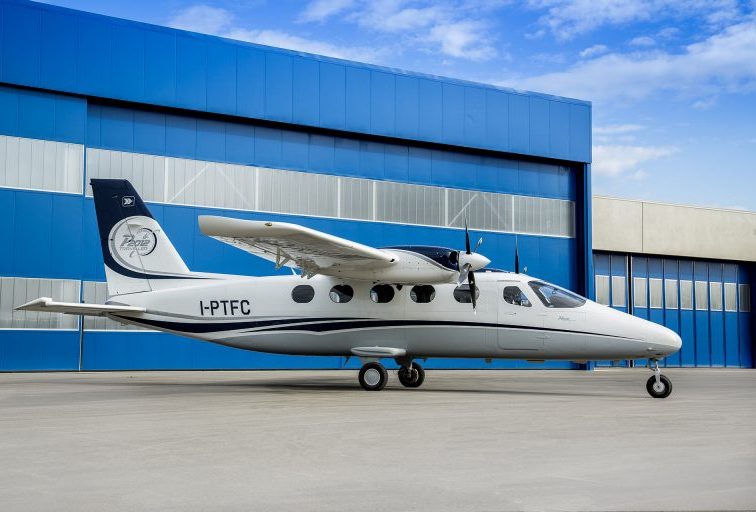
Welcome to an in-depth look at the Tecnam P2012 Traveller, the trailblazing aircraft that’s stirring waves in regional aviation. Setting itself apart from competitors, the Traveller strikes a perfect balance between innovative design, operational efficiency, and remarkable versatility. Step into a world where comfort meets efficiency as we unravel what makes this twin-engine marvel a game-changer within its class. From its high-wing benefits to its fuel-efficient Lycoming engines and unique adaptability across roles, this article goes under the hood of the P2012 Traveller, uncovering why it’s the aircraft of choice for regional airlines and charter operations worldwide.
Introduction to the Tecnam P2012 Traveller
Advancements in aviation technology have given rise to an impressive array of aircraft, each designed with specific characteristics to suit different flight purposes. Among these marvels, the Tecnam P2012 Traveller stands out in the realm of regional aviation. This twin-engine, high-wing aircraft has revolutionized short-haul flights and has become the preferred choice for regional airlines and charter operations around the world.
Manufactured by Tecnam, a leading player in the general aviation sector, the Tecnam P2012 Traveller is specifically designed to meet escalating demands for reliable, efficient, and high-performing commuter planes. Its design is an embodiment of innovation, echoing Tecnam’s commitment to seamlessly merging Italian craftsmanship with advanced aviation technology.
The Tecnam P2012 Traveller isn’t just an aircraft – it’s a versatile travel solution with advanced technical features bundled inside a comforting, spacious cabin. Besides accommodating nine passengers and two pilots with ease, its flexible configuration also allows for its use in various roles, such as cargo transport and special missions.
The P2012 Traveller’s journey, from the blueprint to towering heights, has been marked by rigorous testing and constant refinements, resulting in an aircraft that truly speaks to the needs of modern aviation. Each flight in a Tecnam P2012 Traveller is more than just a journey; it’s an experience of comfortable, efficient, and reliable air travel.
Coming up next in this detailed exploration, we will delve into the history and development of the Tecnam P2012 Traveller, and why it has become synonymous with premium short-haul commutes. Stay tuned!
History and Development of the Tecnam P2012 Traveller
The genesis of the Tecnam P2012 Traveller is embedded in innovation and purposeful design that caters to the complex and evolving needs of modern aviation. Tracing back its roots, the Italian aircraft manufacturer Tecnam, renowned for its efforts in the area of light sport aircraft, saw the need for a durable, high-performing, and versatile twin-engine fixed-wing aircraft to bridge the gap in short-haul capacity in regional flight services.
Initiated in 2007, the development of the Tecnam P2012 Traveller began in earnest, led by Tecnam’s Head of R&D, Professor Luigi Pascale. He aimed to create an aircraft that was not only advanced in terms of its impeccable performance and safety features but also one that was cost-effective for operators. Tecnam intended the result to offer significant efficiency improvements over older, legacy aircraft models that were prevalent in the market.
The P2012 project marked a significant milestone for Tecnam as it was their first foray into larger multiple-engined aircraft development. However, no challenge seemed too great while the new juggernaut took shape in Tecnam’s production facilities.
By 2012, Tecnam had secured its first order from U.S. regional airline Cape Air, providing the much-needed market affirmation for this ambitious project. With a fuel-efficient design, low operational running costs, and the ability to operate in diverse geographical conditions, the Traveller was destined to leave a significant impact.
The Tecnam P2012 Traveller first took to the skies for its maiden flight on 21st July 2016, heralding a new era for regional air transportation. By February 2019, the aircraft gained Federal Aviation Administration (FAA) certification. This landmark development paved the way for the Traveller’s debut into service with Cape Air in December 2019.
Since then, the Tecnam P2012 Traveller continues to transform regional aviation, with operators across the globe recognizing the unique benefits and return on investment it offers. The story of the Traveller is not merely about its development, but it’s also about its revolutionary impact on the aviation landscape, an unmatched legacy that continues to bloom.
Design Philosophy Behind the Tecnam P2012 Traveller
The Tecnam P2012 Traveller is much more than just an aircraft; it represents a vision, a philosophy. As the brainchild of the Italian aircraft manufacturer Tecnam, this twin-engine piston aircraft is a testament to the company’s commitment to innovation, efficiency, and versatility.
The “P” in P2012 stands for Professor Luigi Pascale, one of the founders of Tecnam and the chief designer behind the Traveller. His design philosophy was one which always prioritized operational efficiency and versatility, and the P2012 is a sterling reflection of this ethos.
The philosophy behind the Tecnam P2012 Traveller is essentially a three-pronged approach–efficiency, versatility, and comfort. Let’s delve a bit deeper into each aspect.
Efficiency: The Tecnam P2012 Traveller was created with the idea of a highly efficient aircraft in mind. From its two Tecnam/Lycoming TEO-540-C1A six-cylinder engines that boast of impressive fuel efficiency to its special aerodynamic design that reduces drag, every facet of the plane exemplifies efficiency. This allows the aircraft to offer short take-off and landing (STOL) capabilities and remarkable performance metrics in terms of speed, range, and fuel consumption.
Versatility: Another pillar of the Traveller’s design philosophy is adaptability. The Tecnam P2012 Traveller was envisioned to be an aircraft that could handle a multitude of roles. Whether it’s passenger transportation, cargo, or special missions, this bird can adapt to it all. This is echoed in its spacious cabin that can be reconfigured to accommodate various needs, flexible seating arrangements, and specifically-designed large cargo doors for easy loading and unloading.
Comfort: Last, but certainly not least, passenger comfort was a significant factor in the Traveller’s design philosophy. The spacious cabin, careful soundproofing, efficient climate control system, and comfortable seating arrangements all make travels in the Tecnam P2012 Traveller a delight for passengers.
While other aircraft manufacturers focus on either performance or comfort, Tecnam has succeeded in delivering an aircraft that does both excellently, without compromising on either. This unique design philosophy is the reason why the Tecnam P2012 Traveller is such a standout in the regional aviation industry.
Twin-Engine Configuration Advantages
The Tecnam P2012 Traveller is powered by two dependable Lycoming TEO-540-C1A engines, giving it a unique advantage in the regional aviation market. This twin-engine configuration offers significant benefits, ensuring reliability, performance, and safety during flight.
Firstly, the twin engines enhance the Traveller’s redundancy, ensuring that if one engine fails, the aircraft can continue to fly with the other. This offers a strong safety net for pilots and passengers alike, making twin-engine aircraft a preferred choice in aviation.
Secondly, a twin-engine configuration greatly boosts performance. With two engines, the Tecnam P2012 Traveller has excellent climb rates, improving operational efficiency and flights over challenging terrains. Furthermore, the two Lycoming TEO-540-C1A engines deliver a combined 700 horsepower, enabling the aircraft to reach higher speeds and carry heavy payloads, ideal for cargo missions or fully loaded passenger flights.
Finally, these engines offer excellent fuel efficiency, a crucial feature in today’s environmentally conscious world. The Tecnam P2012 Traveller’s engines are designed to provide maximum performance with minimal fuel consumption, leading to lower operational costs. The aircraft can perform long durations flights, opening the possibility for non-stop routes and thus increasing productivity for airline operators or charter companies.
In conclusion, the twin-engine configuration of the Tecnam P2012 Traveller offers substantial advantages in safety, performance, and economy, making it an excellent choice for those in the regional aviation industry.
Remember to tune in next time as we continue our deep dive into the other attractive features of the Tecnam P2012 Traveller.
High-Wing Design Benefits for Visibility and Stability
The high-wing design of the Tecnam P2012 Traveller isn’t merely an aesthetic choice, but serves a purpose beyond aesthetics. This style of aircraft configuration comes with notable advantages, particularly concerning visibility and stability, making it popular for regional and utility aircraft.
One of the critical benefits of a high-wing design is the improved visibility it offers the pilot. From their vantage point in the cockpit, pilots of high-wing aircrafts like Tecnam P2012 Traveller enjoy an unobstructed view of the land or water below. This unimpeded visibility is not only useful for appreciating the scenery but is crucial during low-level flight, landings, and takeoffs. It provides an enhanced field of view, making it easier for pilots to avoid potential obstacles and hazards.
Stability is another important advantage offered by the P2012’s high-wing design. As the weight of the payload is beneath the wing, it naturally stabilizes the aircraft with a pendulum effect. The resulting reduced roll rate makes the P2012’s flight smoother, providing a comfortable passenger experience.
Further, the high-wing design of Tecnam P2012 Traveller simplifies ground operations. The high wings provide a protective canopy, shielding passengers or cargo from adverse weather when boarding or unloading, and prevents accidental contact with propellers. Furthermore, the configuration facilitates a broad, sturdy landing gear stance, adding to the aircraft’s overall robustness and resilience. This makes it highly capable in a variety of operations including short or rough field operations.
Advancements in aeronautical engineering, such as the P2012’s cutting-edge design, enhance safety profiles. By strategically placing the wings at the top of the fuselage, Tecnam has effectively developed an aircraft that merges performative benefits with safety standards, producing a model which fully addresses today’s aviation needs.
Fixed Landing Gear: Simplicity and Ruggedness
The Tecnam P2012 Traveller stands as a testament to simplicity and ruggedness, expertly embodied in its fixed landing gear. When it comes to achieving operational efficiency and reliability in challenging environments, the fixed landing gear of this aircraft reinvents expectations.
It eliminates the complexity associated with retractable landing gear, reducing the probability of mechanical failure, not to mention the daunting costs of repair and overhaul. This feature presents operators with a significantly lower landing gear maintenance burden, translating into substantial savings in aircraft operation budgets.
The landing gear design of the P2012 is not only simple but rugged as well, showing outstanding resilience. It can handle diverse runway conditions, including unimproved strips. This robust traction system, combined with the aircraft’s short takeoff and landing capabilities, significantly broadens the spectrum of operations the Traveller can undertake.
Its ability to operate smoothly on grass or gravel runways, typical in remote destinations, gives the P2012 an edge when it comes to versatility. This attribute strongly positions the aircraft for roles in regional airlines, charter operations, freight transportation, and even special missions involving health, humanitarian, and emergency response.
In aircraft designs targeted at regional service, simplicity and ruggedness often get overshadowed by the lure of advanced technology. However, with the Tecnam P2012 Traveller, these two features have not only been embraced but expertly leveraged. The result is an aircraft that brings together the best of both worlds: advanced technology and robustness. The simplicity in its fixed landing gear augments its overall operation efficiency, while its ruggedness enhances durability, making the Tecnam P2012 Traveller a model of robust reliability in the world of regional aviation.
So next time you spot the “unfashionable” fixed landing gear on a P2012 Traveller, remember it’s not just about aesthetics, but also about operational simplicity, ruggedness, versatility, and economy. A true testament to Tecnam’s insightful engineering and commitment to robust, efficient design.
Lycoming TEO-540-C1A Engines: Power and Efficiency
When it comes to aircraft engines, power, and efficiency are two of the main things any operator is looking at, and the Tecnam P2012 Traveller confidently meets these expectations with its twin Lycoming TEO-540-C1A engines.
Designed and crafted by Lycoming, a distinguished international leader in general aviation engines, the TEO-540-C1A engines lend the Tecnam P2012 Traveller an awesome balance of performance and economy. Each engine produces 375 horsepower, allowing the aircraft to reach a top speed of around 200 knots. This makes the Tecnam P2012 Traveller a preferred choice for operators seeking a fast, reliable, and robust aircraft for short-haul flights.
The Lycoming TEO-540-C1A engines are turbocharged, a feature that assists in maintaining the aircraft’s performance even at higher altitudes. Most importantly, turbocharging ensures that the engines deliver solid performance in various weather conditions, making the Tecnam P2012 Traveller a reliable choice regardless of the travel season.
However, in addition to power, the Lycoming engines are also recognized for their remarkable fuel efficiency. They are designed to provide top-tier performance while consuming less fuel than many competitors in class. This characteristic significantly reduces operational costs, rendering the Tecnam P2012 Traveller an economical choice for airlines and charter operators.
Furthermore, the engines are known for their longevity and lower maintenance needs. Fewer necessary engine overhauls and the ability to use cheaper Jet A1 fuel contribute even more to the aircraft’s cost-effectiveness.
The engines also incorporate advanced technology, including a dual turbocharging system and Intercooler, to regulate engine temperature. These features extend the engine’s life span, further reducing cost of ownership.
Field-proven with hundreds of satisfied operators worldwide, the Lycoming TEO-540-C1A engines indeed match and elevate the Tecnam P2012 Traveller’s performance, providing the perfect blend of power, efficiency, reliability and cost-effectiveness – all of which transform it into a standout choice in the regional aviation market.
Performance Metrics: Speed, Range, and Fuel Consumption
The Tecnam P2012 Traveller optimizes performance with a delightful blend of speed, range, and fuel consumption, thereby setting new benchmarks in the regional aviation sector. By merging state-of-the-art engineering with advanced, high-wing design and a rugged fixed landing gear structure, the P2012 ensures a smooth and efficient ride for passengers and cargo alike.
Fuelled by two Lycoming TEO-540-C1A engines, this twin-engine regional aircraft boasts impressive speed capabilities. The robust powerplants allow the P2012 to sustain a cruising speed of approximately 190 knots, balancing a rapid transport timeline with an enjoyable cruise experience for the travellers.
Equally impressive are the aircraft’s range abilities. The extended range capacity of around 950 nautical miles further highlights the P2012 Traveller’s credibility in efficiently accommodating long-haul routes. This impressive range feature dovetails with the aircraft’s optimal fuel efficiency, underscoring its prowess in managing economic travel sequences.
In terms of fuel consumption, the Tecnam P2012’s performance stands out. The aircraft’s advanced engine design leads to a significant reduction in fuel use compared to similar-class aircraft. This translates into a marked reduction in operational costs for owners and operators. Further accentuating this is its ability to take off and land on short runways, making it a sound choice for operations at smaller airports.
In summary, the Tecnam P2012 Traveller is the embodiment of reliable performance metrics. It exemplifies speed, demonstrates expanded range, and minimises fuel consumption – a superior trio of characteristics that contribute notably to its rising popularity among regional airlines and charter operators.
Short Takeoff and Landing Capabilities
The Tecnam P2012 Traveller, one of the modern sensations in the aviation industry, possesses remarkable short takeoff and landing (STOL) capabilities. This feature sets it apart from many of its competitors and makes it an ideal choice for small airports with constrained runways.
The Traveller’s advanced aerodynamics, combined with its powerful Lycoming TEO-540-C1A engines, make it capable of taking off and landing on runways as short as 3,300 feet (1,006 meters). This means, even in adverse wind conditions or at high-altitude airports, operations remain uncomplicated and safe.
Moreover, these STOL capabilities provide operators with access to more locations, expanding their service area without the need for large investments in infrastructure. This is a significant advantage, especially for regional airlines and charter services looking to increase their operational efficiency and reach.
In terms of landing, the Traveller’s high-wing design delivers superior visibility, making it easier for pilots to navigate during approach and landing. The large, durable, and fixed landing gear also provides stability, even when landing on rough, unpaved airstrips.
The beauty of the Tecnam P2012 Traveller lies in its ability to perform consistently in high-density altitude situations where air density affects an aircraft’s performance. The Tecnam P2012 exhibits stable handling characteristics and outstanding performance, even in challenging conditions.
In conclusion, the short takeoff and landing capabilities of the Tecnam P2012 Traveller are part of what makes it an exceptional aircraft. Whether it’s enhancing operational flexibility, expanding service areas, or simply the guarantee of safe and effective flights, the Traveller’s STOL capabilities deliver on all fronts. The clear advantage of these features positions the Tecnam P2012 Traveller as a standout choice in the regional aircraft market.
Cabin Layout and Passenger Comfort Features
When it comes to passenger convenience, the Tecnam P2012 Traveller excels. Designed with an emphasis on comfort and practicality, it is ideally suited for charter operations, regional airlines, and any business with high-frequency, short-haul requirements.
The cabin of the Tecnam P2012 Traveller is exceptionally spacious for a small regional aircraft. It accommodates up to nine passengers, with seats arranged in three rows. This twin-engine aircraft incorporates a modern and clean design, superb ergonomics, and the generous cabin height allows passengers to walk upright during boarding, enhancing the overall flight experience significantly.
What’s more, the seats are not only comfortable and inviting but also provide ample legroom for passengers, ensuring you arrive at your destination feeling relaxed and refreshed. All seats are equipped with quick-release mechanisms, allowing for swift reconfiguration based on passenger needs.
Additionally, the Tecnam P2012 Traveller has sizeable overhead compartments that provide ample storage space for carry-on luggage. The sizable windows offer excellent views and flood the cabin with natural light. This combination of spaciousness, comfort, and efficient design is a distinct competitive edge of the Traveller, offering an elevated flight experience for travellers.
But passenger comfort isn’t limited merely to spaciousness. The Tecnam P2012 Traveller also ensures a quiet, smooth ride. The cabin interiors are insulated to significantly reduce engine noise, resulting in a tranquil ambiance for passengers. The air conditioning system ensures consistent temperature control throughout all phases of flight, and adjustable individual air vents offer added passenger comfort.
The Tecnam P2012 Traveller indeed stands out for its thoughtfully designed cabin layout, providing comfort and functionality that ensure passengers have a pleasant, enjoyable flight. So whether you’re a businessperson seeking efficiency, a charter operator delivering exceptional service, or a regional airline aiming to offer a comfortable journey to passengers, the Tecnam P2012 Traveller has features that cater to every need. It isn’t just about getting from point A to B; it’s about enjoying the journey, which is precisely what the Tecnam P2012 Traveller offers.
Versatility: Passenger, Cargo, and Special Mission Configurations
One of the most impressive features of the Tecnam P2012 Traveller is undoubtedly its versatility. Designed to adapt to a wide range of operational profiles, the aircraft exhibits exceptional flexibility in facilitating several mission types. Whether we are talking about passenger transport, cargo delivery, or special missions, the P2012 stands out as a multi-mission master.
As a passenger transport, the Tecnam P2012 Traveller presents a spacious and comfortable cabin capable of accommodating up to 9 passengers in addition to a pilot. Enhanced by its panoramic windows, high-end soundproofing, and ample legroom, passengers are assured a comfortable journey. The spaciousness of the aircraft’s cabin also allows an airliner style seating configuration, further amplifying its appeal to regional airlines and charter services.
In terms of cargo delivery, this aircraft excels too. With its twin-engine configuration and robust landing gear, it can handle significant weights, thus making it ideal for cargo and freight applications. Its high-wing design allows a large cargo door, making loading and unloading quicker and easier. Furthermore, the versatile space in the cabin can easily transform from passenger configuration to cargo form, capable of accepting standard cargo pallets.
When it comes to special mission configurations, the P2012 Traveller showcases its true adaptability. Its ability to take off and land on short and rugged runways opens up operational possibilities in remote locations, making it suitable for search and rescue missions, or serving as an air ambulance.
Incorporating a quick-change interior, operators can switch between these different configurations swiftly, maximizing the productivity and utility of the aircraft. Within just a couple of hours, the aircraft’s configuration can be switched, enabling drastic mission shifts without significant downtime.
The Tecnam P2012 Traveller, with its unique blend of versatility, demonstrates its invaluable contribution to regional aviation. Be it passengers, cargo, or special missions, this aircraft is prepared to deliver stellar performance while maintaining affordable operational costs. The P2012 Traveller indeed showcases that it is one aircraft designed for multiple missions.
Avionics Suite: Garmin G1000 NXi and Safety Features
The Tecnam P2012 Traveller is outfitted with a state-of-the-art avionics suite, the Garmin G1000 NXi, enhancing its efficiency, reliability, and overall performance. The cockpit perspectives offered by this avant-garde system favour a seamless and intuitive flight experience, providing a concise overview of aircraft navigation, engine data, flight instrumentation, and pilot communications.
Garmin G1000 NXi stands out in the aviation industry with its high-resolution 10.4″ LCD displays capable of splitting functions across screens. It integrates all primary flight, navigation, weather, terrain, traffic, radio frequency, engine data and it’s complemented by a full-featured audio panel.
One of the premium features of this system includes SurfaceWatch™ that aids in preventing pilots from taking off or landing on a taxiway, on a runway that is too short or on the wrong runway based on performance data entered during preflight. It provides visual and aural alerts to help pilots avoid these potential, and common, human errors.
Additionally, equipped with the Automated Dependent Surveillance-Broadcast (ADS-B), the Garmin G1000 NXi provides extensive, real-time aircraft traffic information, enhancing situational awareness for the pilot—a crucial safety advantage during flights.
The G1000 NXi also incorporates cutting-edge alerting features like the “Smart Rudder Bias.” This feature analyzes the engine that failed, identifies the critical engine, and then applies the correct amount of rudder bias to aid in controlling the aircraft. This automation assists the pilot, so they can focus on single-engine procedures and safely land the aircraft.
Beyond these, the system also encompasses features for efficient pathfinding and fuel planning, high-resolution terrain mapping, graphical flight planning, and much more. The integration of all these technological features improves not just the utility but also contributes significantly to the safety procedures of the Tecnam P2012 Traveller.
Lastly, the Garmin G1000 NXi system is approved for Visual and Instrument Flight Rules (VFR and IFR) and supports optional capabilities such as data link weather, traffic and music, and the Garmin SafeTaxi which provides detailed taxiway diagrams at over 950 airports.
All these innovative aspects combine to make the Tecnam P2012 Traveller a technologically-rich, safe, and reliable option for any operator looking to enhance their fleet capabilities.
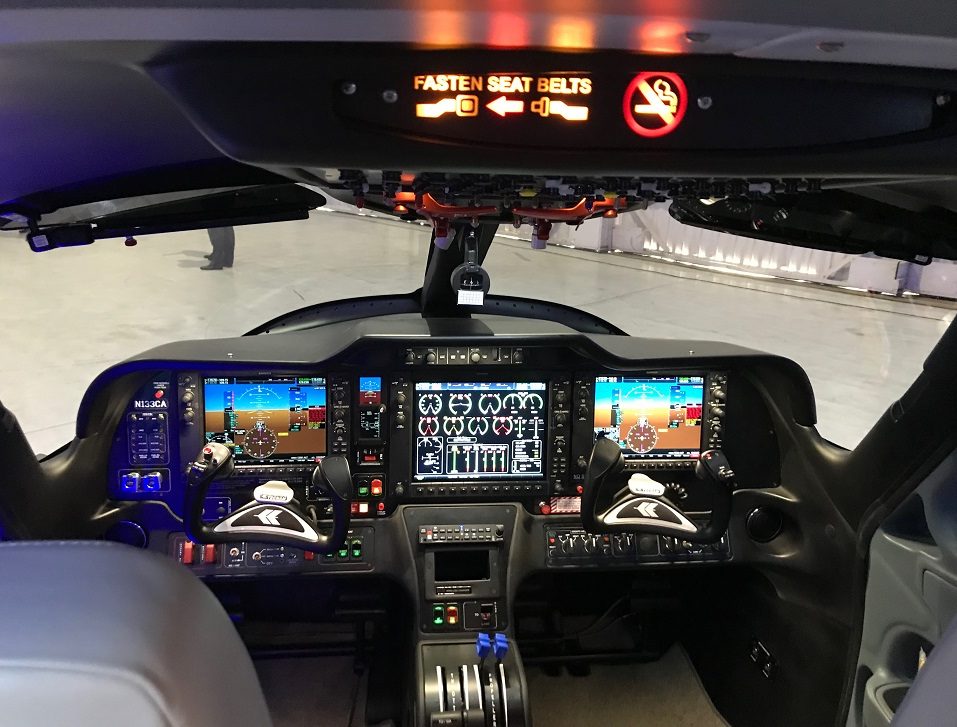
Single-Pilot Operation Certification
The single-pilot operation certificate is one of the key highlights of the Tecnam P2012 Traveller aircraft. This feature sets it apart from similar twin-engine regional transport aircraft on the market and helps improve operational efficiency.
Generally, twin-engine aircraft require a two-person flight crew: a captain and a co-pilot. However, with the Tecnam P2012 Traveller, a full range of operations can be conducted safely and effectively by a single pilot. This is made possible by advanced design, aerodynamics, and avionics featured on the Traveller.
The single-pilot operation is enhanced by the Garmin G1000 NXi avionic suite, boasting comprehensive flight information and intuitive flight planning abilities. The advanced avionics system reduces workload on the pilot with automated systems for engine monitoring, flight controls, navigation, and communication. This feature is incredibly valuable in maintaining precision during critical flight phases while ensuring the highest levels of passenger safety.
Getting certified for single-pilot operations involves rigorous training and stringent certification processes. Pilots need to demonstrate their ability to handle various flight scenarios and emergency situations effectively alone. Once certified, the pilot can then operate the aircraft single-handedly, making the P2012 Traveller a game-changer for small-scale charter companies, flight training organizations, and private operators seeking versatility and cost efficiency.
The single-pilot certification advantage significantly reduces the operational cost by eliminating the need for a second pilot. It allows operators to deploy the aircraft efficiently and flexibly as per their business needs.
However, it’s important to note that while the P2012 Traveller is capable of single-pilot operation, it can also comfortably accommodate a two-pilot crew. The cockpit’s design is ergonomically made for one or two pilots without sacrificing comfort or functionality.
In conclusion, the single-pilot certification of Tecnam P2012 Traveller exemplifies its uniqueness as a modern and efficient regional transport aircraft. Its capability to be operated by a single pilot presents a host of benefits to operators, marking the Traveller as a true game-changer in the regional aviation market.
Maintenance Considerations and Operational Costs
When it comes to the maintenance and operational cost side of the Tecnam P2012 Traveller, the aircraft promises impressive returns. It was designed with cost-efficiency in mind, aiming to maximise profitability for operators, whether in charter, regional airline, or special mission services.
One of the prime factors contributing to the low operational cost of the Tecnam P2012 Traveller is its twin Lycoming TEO-540-C1A engines. These engines not only offer efficient performance but are also renowned for their longevity, thereby lowering overall maintenance costs. They are able to run on both Avgas and Mogas, providing operators with greater flexibility and potential savings on fuel costs.
The Traveller also boasts of a simple mechanical design, which makes routine maintenance easy and lowers the total upkeep cost. In addition, the fixed, rugged landing gear can withstand rigorous landings on rough strips, reducing costs associated with tire and gear repairs.
The aircraft’s well-organised systems layout also allows for easy access to critical service points, speeding up inspection and maintenance processes. This, in turn, results in minimised downtime and increased operational efficiency, another crucial advantage for fleet operators.
The Tecnam P2012 Traveller’s direct operating costs (DOC), which include expenses related to fuel, maintenance, crew salaries, and aircraft insurance, among others, are kept low, thanks in part to its fuel-efficient engines. The aircraft has been noted to have a lower DOC per hour in comparison to similar models from competitors, which could result in significant savings for operators over time.
Investing in a Tecnam P2012 Traveller can also lead to lower indirect operating costs (IOC). These costs, which are not associated with flights but with the ownership of an aircraft, are reduced mainly due to the lower acquisition price of a Traveller compared to similar aircraft. Its simple systems, fewer necessary crew members, and the possible reliance on cheaper fuel (Mogas) also contribute to a lower IOC.
Looking at these factors, it becomes clear why the Tecnam P2012 Traveller could be a smart choice for operators who are looking for a capable, efficient, and cost-effective solution for their operations.
Environmental Impact: Emissions and Noise Reduction
In the modern era of aviation, environment-friendly design and operations are imperative. The Tecnam P2012 Traveller sets the standard not only for performance and versatility but also for eco-friendly operations. Let’s discuss how the aircraft addresses issues regarding emissions and noise pollution.
Firstly, the Traveller’s powerplant, the Lycoming TEO-540-C1A engines, is not only superior in terms of raw power and efficiency but also plays a pivotal role in reducing emissions. Designed with innovative technology, these engines comply with the most stringent emission regulations, ensuring that the Tecnam P2012 contributes less to air pollution compared to comparable plane models.
The engines also feature a sophisticated fuel injection system, which is responsible for reducing fuel consumption. This, in turn, directly translates to lesser CO2 emissions per flight making it a greener choice for regional aviation. Now more than ever, airlines and operators are searching for modes of transport that align with the global movement towards reduced carbon emissions, and the Tecnam P2012 Traveller meets this demand with grace.
Moreover, noise pollution is a serious issue affecting communities near airports and flight paths. The Tecnam P2012 Traveller adeptly addresses this issue by featuring a noise suppression system, making it an excellent neighbour in the skies. The aircraft’s propellers are designed for quiet and efficient operation, reducing the decibel level within and around the aircraft.
The dampeners in the engine mounts also help reduce the vibration noise produced, contributing to a quieter cabin and less audible noise to the ground. These efforts collectively make flights less disruptive to wildlife and humans near flight paths and airports.
Therefore, it’s evident that the Tecnam P2012 Traveller takes into account its environmental responsibilities while offering top-notch performance specifications. The aircraft’s low emission rates and noise reduction capabilities stand testament to Tecnam’s commitment to creating products that are not only innovative and superior in handling, but also conscious about minimizing their carbon footprint on the environment.
Investing in a Tecnam P2012 Traveller is not just a smart choice for operators—looking at the broader picture—it’s a responsible choice for our planet as well.
Remember, flying shouldn’t have to mean compromising on our responsibilities towards the environment. Choose the Tecnam P2012 Traveller – a choice that is efficient, powerful, and eco-friendly.
Comparison with Legacy Aircraft in the Same Category
When evaluating the Tecnam P2012 Traveller, it’s crucial to compare it with other popular aircraft in the regional aviation market. Two legacy aircraft in the same category that often come up in the discussion are the Cessna 402 and the Piper Navajo.
The Tecnam P2012 Traveller has numerous advantages over these legacy aircraft. For instance, unlike the Cessna 402 and Piper Navajo, which are both outfitted with older engine technology, the P2012 features two modern, efficient Lycoming TEO-540-C1A engines. These engines make the Traveller more fuel-efficient and robust, enhancing its overall performance.
Additionally, the Traveller’s engines offer a higher power output, enabling it to achieve a greater operating altitude and to operate in a wider range of climatic conditions. This is a significant advantage for regional operators who frequently fly in challenging weather.
Another advantage of the Traveller over these legacy aircraft is its cabin space and layout. The P2012 comfortably fits nine passengers in a spacious cabin, surpassing the Cessna 402’s 6-10 passenger capacity and the Navajo’s 5-7 passenger capacity. Not only does the Traveller accommodate more passengers, but its cabin is designed with passenger comfort in mind, complete with high-quality materials and modern amenities.
When it comes to avionics, the P2012 is equipped with Garmin’s state-of-the-art G1000 NXi glass cockpit, which enhances its operational efficiency and safety. On the other hand, the Cessna 402 and Piper Navajo are typically equipped with older-generation avionics.
In terms of operational costs, the Tecnam P2012 Traveller also shines. Thanks to its efficient engines and modern components, it requires less maintenance, reducing operating costs over time. In contrast, maintaining legacy aircraft like the Cessna 402 and Piper Navajo can often be costlier due to their older components and less efficient engines.
Auditing these comparisons, it’s clear that the Tecnam P2012 Traveller provides significant value and outperforms these legacy aircraft in various critical aspects. As a result, it’s proving to be an attractive asset for regional operators seeking to modernize their fleets.
Advantages over Single-Engine Competitors
One of the outstanding strengths of the Tecnam P2012 Traveller that sets it apart in the aviation industry is its twin-engine configuration. While single-engine aircraft may initially appear to be cost-effective alternatives, they are often curtailed by several limitations, which are expertly overcome by the P2012 Traveller.
Firstly, the macro advantage of having two engines is the increased reliability it offers. Unlike single-engine aircraft, the P2012 Traveller provides a crucial backup in case of engine failure, greatly improving the safety quotient of your flights.
Fuel efficiency is another significant advantage associated with twin-engine aircraft like the P2012 Traveller. Especially during long-haul flights, a twin-engine configuration can maintain adequate power levels without excessively burning fuel, making it an economical choice in the longer run.
Operational flexibility is yet another strength of the Tecnam P2012 Traveller. Single-engine aircraft often face restrictive boundaries in terms of their range and payload capabilities. The robust twin-engine setup of the P2012 Traveller allows it to accomplish an exceptionally broad range of missions, including passenger transport, cargo journeys, and special tasks, thereby solidifying its position as the diverse workhorse of the aviation industry.
Furthermore, the advanced engine technology embedded into P2012’s twin engines allows for quiet, smooth, and efficient operation, enhancing overall passenger experience, which is always a priority for any operator.
In terms of range, speed, and performance, the Tecnam P2012 Traveller outperforms most single-engine competitors. With a maximum cruise speed of 190 knots and a range of 950 nautical miles, this aircraft is capable of accomplishing long-distance flights with ease. Additionally, its short takeoff and landing capabilities cater to a wider variety of airports, even those with shorter runways, adding to its operational flexibility.
Lastly, let’s not overlook the impressive carrying capacity offered by the P2012 Traveller, thanks to its robust twin-engine configuration. Capable of comfortably accommodating nine passengers along with two crew members, it effortlessly tops the charts when compared to the limited capacity typical of most single-engine aircraft.
In summary, choosing a Tecnam P2012 Traveller proves advantageous over single-engine competitors in many different aspects – safety, fuel efficiency, operational flexibility, passenger experience, speed, range, and carrying capacity, making it a wise investment for any aviation operator.
Stay Tuned: Up next, we dive into real-world performance insights that validate why many airline operators and charter services prefer the Tecnam P2012 Traveller.
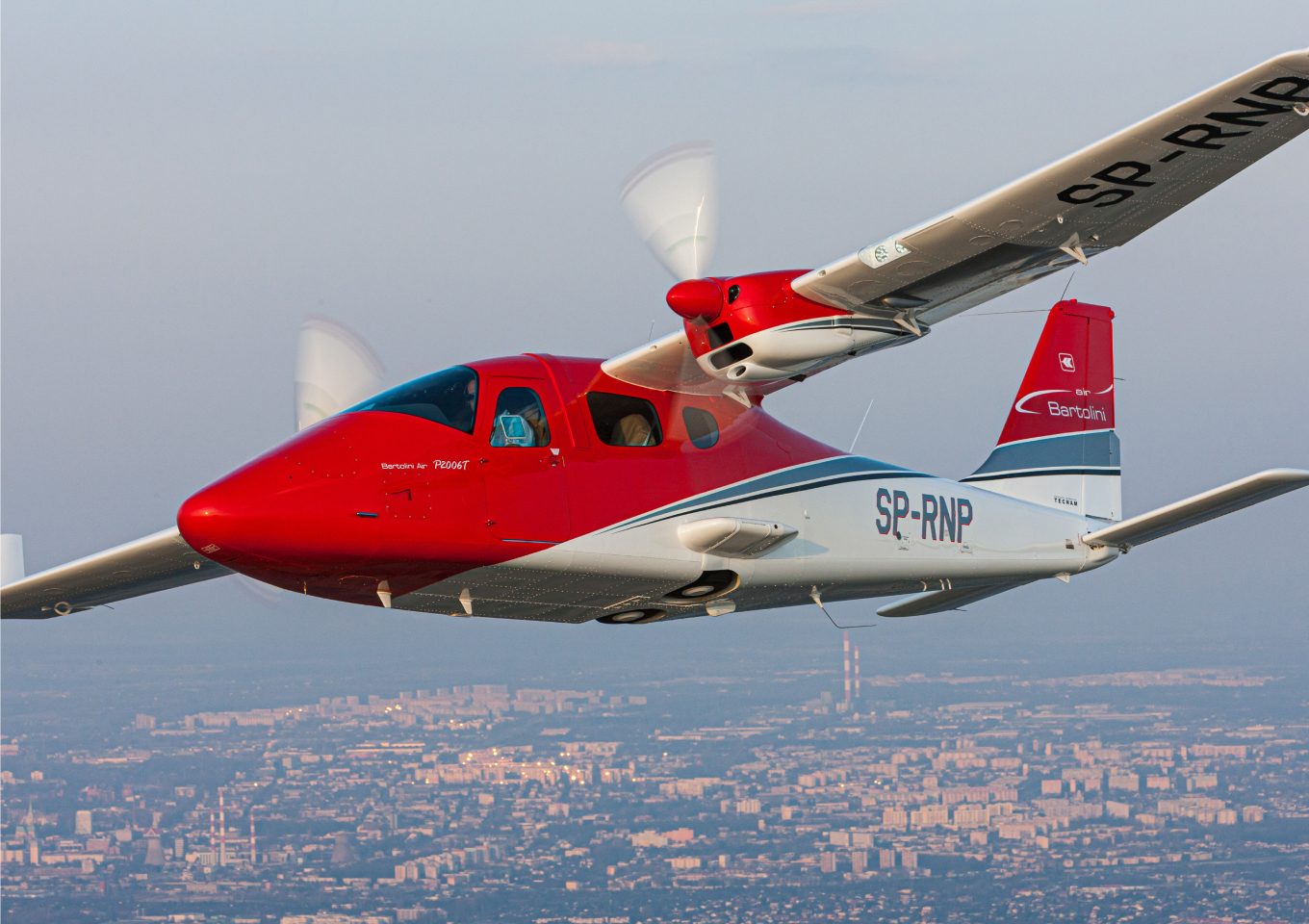
Real-World Performance: Airline and Charter Experiences
While reading about the theoretical benefits and capabilities of an aircraft is informative, there’s no substitute for real-world feedback. That’s why we’ve reached out to several airlines and charter operators who’ve had firsthand experience with the Tecnam P2012 Traveller.
One of the key things that many operators have praised about the P2012 Traveller is its reliability. In a business where time is money, the Traveller’s consistent performance has proved to be a valuable asset. The twin-engine configuration not only offers improved safety, but also assures uninterrupted service, reducing the risk of flight cancellations or delays due to mechanical issues.
Charter operators, in particular, have been impressed by the aircraft’s versatility. The capability to seamlessly switch between passenger, cargo, and special mission configurations has enabled them to cater to a wide variety of customer needs. Whether it’s transporting business persons, delivering crucial cargo, or undertaking special missions like air ambulance operations, the Tecnam P2012 Traveller has excelled in all roles.
Regional airlines have found the P2012 Traveller to be an economical solution, owing to its exceptional fuel efficiency and low operating costs. The generous cabin space and comfort features have also been appreciated, leading to improved customer satisfaction scores.
Moreover, the P2012 Traveller’s performance in varied weather conditions, and its short takeoff and landing capabilities have allowed airlines to maintain schedules and ensure on-time performance, even from challenging airports with shorter runways.
To sum up, the Tecnam P2012 Traveller has not just lived up to its expectations but exceeded them in many areas according to the people who have used it most – the airlines and charter operators. Its real-world performance, practicality, and adaptability have solidified its position as a leading choice for regional air travel and charter services.
Future Developments and Potential Variants
The future of aviation continues to evolve with advancements in technology, operational necessities and environmental demands. In this context, where does the Tecnam P2012 Traveller fit? The answer lies in the potential of this aircraft model for future developments and variants.
The Tecnam team already proved their commitment to innovation when they developed the P2012 Traveller. A bold and ambitious move, the Traveller stands as the first new piston twin designed and certified in the 21st century. The robust build of the Traveller is well-suited for adaptation to new variants which might include potential for STOL (Short Take Off and Landing) capabilities, increased capacity, or even an amphibious version.
STOL characteristics could allow the Traveller to operate in more challenging, remote environments, increasing its versatility. With the world becoming more connected, these types of transport enhancements stand to benefit charter operations and regional airlines alike, opening opportunities to reach previously inaccessible locations.
Further, there is ongoing research, testing and development to upgrade or modernize the Traveller with new technologies as the aviation industry evolves. Safety upgrades, enhanced avionics, or even hybrid or electric propulsion may all be future considerations on the Traveller development roadmap.
One important trend in the industry is the push towards cleaner, greener flight. Tecnam is certainly not a stranger in this regard, being a frontrunner in research and development around electric aviation. While the Traveller currently uses conventional, efficient Lycoming engines, it isn’t far-fetched to say that we might see an electric or hybrid variant of the model in the future.
Arguably the most exciting aspect of aviation is its constant state of evolution. Planes get faster, smarter, more efficient – and Tecnam, with its P2012 Traveller, shows no signs of standing still. The possibilities for future development are both thrilling and promising for the industry, as is the potential of the P2012 Traveller to transform alongside it. Remember that in Tecnam’s own words, “innovation is a value.”
The Tecnam P2012 Traveller’s Role in Modernizing Regional Aviation
As we pan the lens on the landscape of regional aviation, one aircraft stands out stellar – the Tecnam P2012 Traveller. A high-performing twin-engine aircraft, the Tecnam P2012 Traveller, has been instrumental in revolutionizing regional air travel, bringing forth an unprecedented blend of efficiency, performance, and comfort. Aptly named ‘Traveller,’ this airborne marvel has travelled beyond conventional realms, shaping a new trajectory for regional aviation with each flight.
One of the most prominent ways the Tecnam P2012 Traveller has transformed regional aviation is through its unparalleled efficiency. The aircraft’s ability to perform on shorter runways, traditionally associated with regional travel, has been spectacular, thanks to its short takeoff and landing capabilities. This feature allows the P2012 Traveller to tap into markets previously untouched by many of its competitors.
The twin-engine configuration of the Tecnam P2012 Traveller is seen as a significant factor contributing to its operational efficiency. The aircraft’s use of two Lycoming TEO-540-C1A engines provides it with the power and performance necessary for regional operations, offering a level of reliability that many single-engine aircraft simply cannot match.
In the age where passenger comfort dictates operator success, the P2012 Traveller performs brilliantly. It has a spacious cabin that puts passenger comfort at the forefront of its design philosophy. This attention to passenger experience, even in regional settings, has set new standards in an industry sector traditionally infamous for being comfort-lacking.
Environmental considerations are being prioritised more than ever in the modern aviation industry. The Tecnam P2012 Traveller proves its worthiness by effectively reducing emissions and incorporating noise reduction features. These aspects enrich the aircraft’s reputation, making it a more sustainable choice for regional operators.
Ever since its first flight, the Tecnam P2012 Traveller has been increasing its market presence, taking over legacy aircraft such as the Cessna 402 and Piper Navajo, and offering advantages over single-engine competitors. Its ongoing improvements, along with potential variants in development, bode well for the aircraft’s future, indicating that its role in modernising regional aviation is far from over.
The testimony to the success of the Tecnam P2012 Traveller is the positive feedback and case studies from operators who have chosen to invest in this aircraft. Regional airlines and charter operators alike have found the Traveller to be a game-changing addition to their fleets, highlighting its reliability, efficiency, and versatility.
In sum, considering all the aforementioned points, the Tecnam P2012 Traveller’s role in modernising regional aviation is both pivotal and transformative. By marrying unrivalled performance with superior comfort and environmentally-sound features, this aircraft has laid a strong foundation for the future of regional aviation. Its continuous development and adaptability ensure it will keep playing a leading role in the evolution of this sector. And, as the development continues, one can say with certainty – regional aviation travel is moving into a vibrant future, with the Tecnam P2012 Traveller at the helm.
